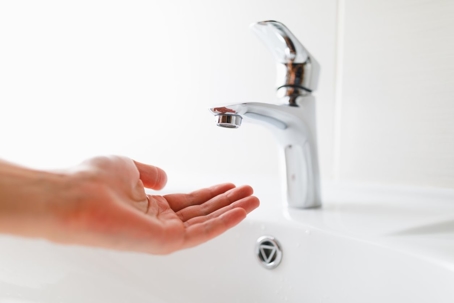Problems with water pressure can be frustrating. It can take seemingly ages to fill a bathtub or sink. The showerhead trickles when what you need is a jet of high-pressure water. Plus, the washing machine and dishwasher take an extended amount of time to run a cycle.
There could be a variety of reasons for low-water pressure. Below are some of the most common causes. Some of these you can fix yourself. Others will require a professional plumber to diagnose and resolve. Either way, you want to solve your water-pressure woes as soon as possible.
Low water pressure can be frustation, whether in the shower, cleaning dishes, or simply washing your hands. But there are a few common causes of low water pressure, which you'll can identify and troublehsoot by diving into the info below.
Before diving into the details below, here's a quick overview of why your water pressure is low:
- Any one of your fixtures is leaking or clogged
- Your water meter or main shutoff valve is partially closed
- Your pressure regulator is faulty, causing fluctuations
- Old pipes like galvanized steel corrode, lowering water pressure
- Your water heater, which affects pressure, is broken
- Hardwater is causing calcium accumulation, slowing water flow
The Fixture is at Fault
If only a single fixture has low water pressure, you likely have something wrong with the fixture itself or the plumbing attached to it. This could be something as simple as a clog or the problem could be more severe such as a leak.
A Valve is Partially Closed
Either the water meter valve or the main shutoff valve is partially closed.
Located next to a home's water meter is the water meter valve. Most people will never use this valve. It technically belongs to the local water company. This valve should only be used by water company personnel. If the water pressure is low throughout the home, it’s possible this valve has not been fully opened. This is commonly the case after work has been done on a home's plumbing system. This valve is located outside of a house. The valve's handle should be parallel with the water pipe. If the handle is at an angle, it’s not completely open.
A home's main shutoff valve can often be found inside a home near the main supply pipe. Make certain the valve is completely open. The main shutoff valve should be turned completely in a counterclockwise direction if it has a wheel-like handle. Some are a lever handle. In this case, it’s fully open when the handle is parallel to the pipe direction.

